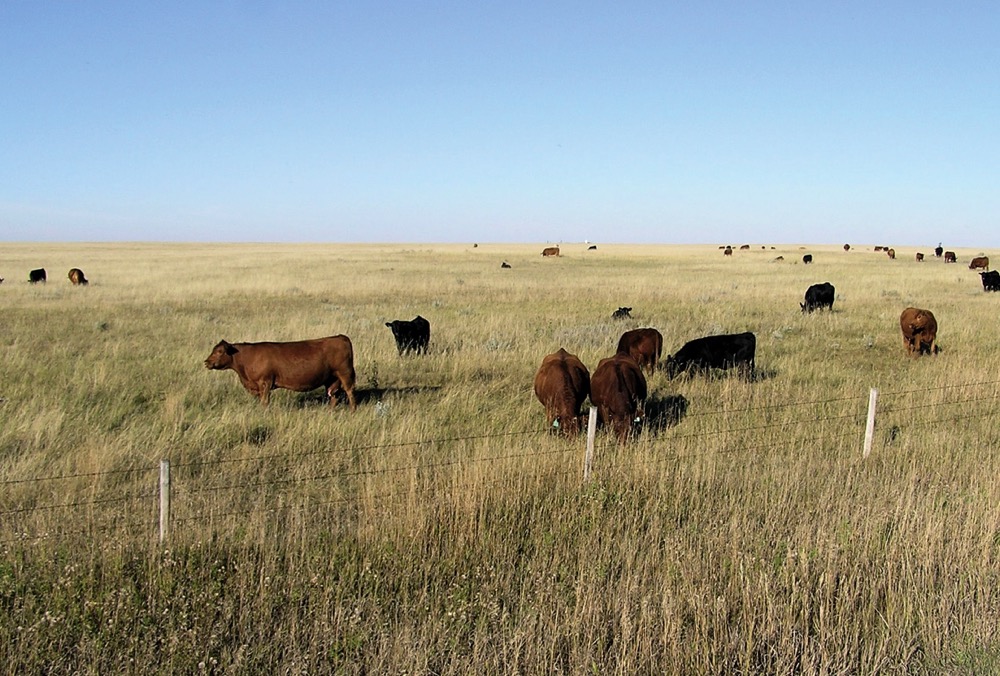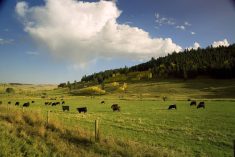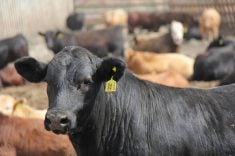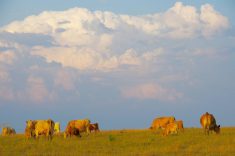Historians think anthrax originated in Egypt and Mesopotamia. Biblical scholars suggest that during Moses’ time and through the 10 plagues of Egypt, anthrax may have caused the fifth plague, captured in ancient script as a sickness affecting horses, cattle, sheep, camels and oxen. Homer described a plague that many believe to be anthrax in The Iliad (700 BC), as did Virgil in poems written during his life (70 to 19 BC).
Anthrax, caused by a spore-forming bacteria called Bacillus anthracis, is ubiquitous. Few countries in the world have not reported outbreaks of anthrax. Anthrax is most common in agricultural regions of Central and South America, sub-Saharan Africa, Central and Southwestern Asia, Southern and Eastern Europe, and the Caribbean.
Read Also

Building demand together: The impact of Canada’s beef import levy
The beef import levy has become a central tool for ensuring balance in Canada’s beef industry
How anthrax reached North America is now buoyed by genetic analysis and scientific interpretation.
Bacillus anthracis holds a crucial place in the history of medical microbiology. Robert Koch’s work on anthrax showed that a causative organism could be isolated from the blood of infected animals, artificially grown in pure culture and then used to reproduce the disease in animals. This led to the formulation of Koch’s postulates. Louis Pasteur actively immunized animals by infecting them with attenuated cultures of B. anthracis.
The gram-positive, rod-shaped bacteria cause serious disease in both humans and animals. Anthrax is spread through spores from dead animals, contaminated hides, spore-contaminated ground and scavenged meat. Anthrax spores, the infective stage of anthrax, persist for decades.
Anthrax is primarily a disease of animals; sudden death the normal outcome. Cutaneous infection in humans is the most frequent clinical form of anthrax, acquired through contact with products from infected animals (mainly cattle, goats, sheep) such as leather or woolen goods, or through contact with soil containing anthrax spores. Human cases in countries where animal protein is scarce are often reported following attempts to salvage meat from dead wild and domestic animals that have died of anthrax. Lung and bowel infections are often fatal.
When anthrax spores get inside the body, they are “activated.” Bacteria rapidly multiply and produce powerful toxins. The cells themselves impede natural defense mechanisms. The result: vascular collapse and death. In the presence of free oxygen, vegetative cells produce spores. Anthrax spreads through the uptake of spores from the environment. Persistence of spores is influenced by moisture, temperature, soil pH and the presence of nutrients required for sporulation.
Anthrax is diagnosed using bacterial cultures and detection of characteristic spores and bacteria in carefully collected blood samples. Anthrax is treated by the use of antibiotics. It is possible to prevent anthrax through vaccination.
The cyclical presence of anthrax through eras is puzzling. For example, at the time of Pasteur’s interest in anthrax, the incidence of the disease had surged to the point where contemporary observers felt anthrax would doom France’s animal industry. Global cooling that marked 18th century Europe may have suppressed anthrax compared to what happened over the next 100 years. The Industrial Revolution with increased trade in contaminated animal materials may have been a catalyst. Global warming through the 19th and 20th centuries probably contributed to the decline of anthrax on North American ranges and its increase in territories previously locked in permafrost.
Modern technology allows detailed analysis of gene segments (nucleotide polymorphisms). Genetic mapping provides a clearer picture of when and how anthrax arrived in the Western Hemisphere.
During the late Pleistocene epoch (2.5 million years to 12,000 years ago), Asia and North America were joined by the Bering Steppe, which allowed animals and humans to freely cross what later became a water barrier. Early human commerce and trade in animal products contaminated with Bacillus anthracis spores contributed to dispersal of anthrax from Eurasia to the Western Hemisphere. Humans were instrumental in spreading anthrax farther south through an ice-free corridor that opened in Central Canada approximately 13,000 years ago. Extensive and far-ranging bison herds no doubt played a role. A Western North American strain of anthrax is well known. Subsequently, continent-wide dispersal of Western North American B. anthracis likely happened with movement of Indigenous people and early European immigrants through contaminated hides, hair and bones they used to survive.
B. anthracis has dispersed globally in large and sequential radiations associated with human commerce and trade of animal products contaminated with B. anthracis spores. Without human involvement, infected animals typically die within seven to 10 days. The potential for dispersion even among migratory herds is limited since infected animals typically die quickly.
People scavenging food, hair, hide and bones from animals that died of anthrax facilitated dispersal of spores away from a carcass. Imported spore-contaminated animal hides account for many recent U.S. human anthrax cases. The current distribution of B. anthracis can be traced to historical human dispersion, trade and migratory patterns.
For a country such as Australia, the Industrial Revolution and development of agricultural practices were probably the major factors in introducing anthrax. In Australia, it is believed that the outbreaks occurred not from direct feeding of bone flour to livestock but as a result of cattle and sheep grazing land treated with imported bone flour for horticultural purposes. Anthrax has not been recorded among the native fauna of Australia.
In North America, two distinct types of anthrax cases are seen. An East Coast strain exists through intercontinental trade and the industrial processing of contaminated animal products. Wool moving into textile mills is most often the culprit. These strains contribute to the genetic diversity of North American B. anthracis isolates. Western North American grasslands and millions of bison over the last 10,000 years provided an ideal ecological reserve for establishment of anthrax. Sporadic outbreaks in south Texas suggest linkages with colonial (Spanish) animal imports.
Western North American isolates have been recovered from near the Arctic Circle in Canada to the U.S.- Mexico border and as far as Haiti. They account for 89 percent of non-human anthrax cases in North America.

















